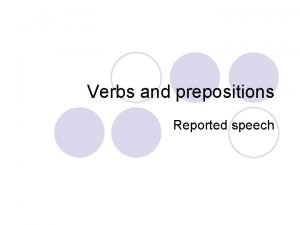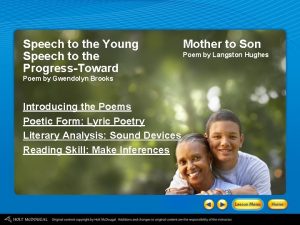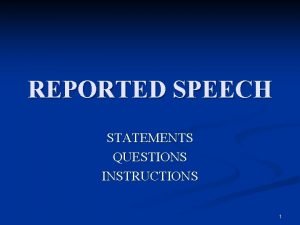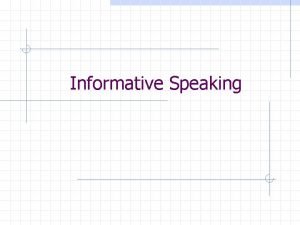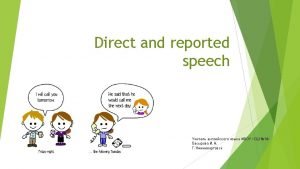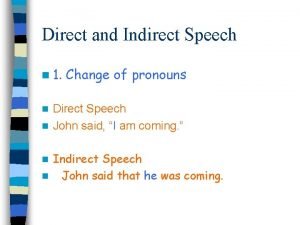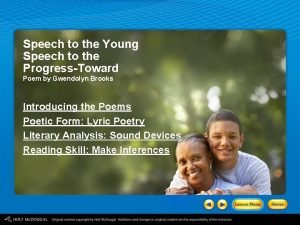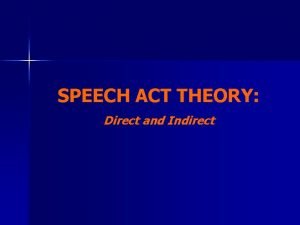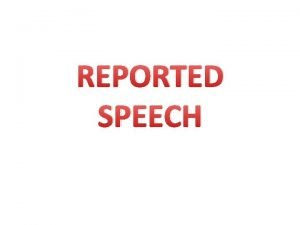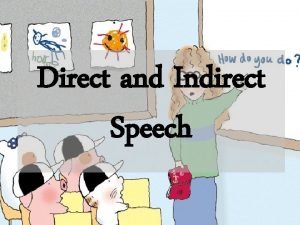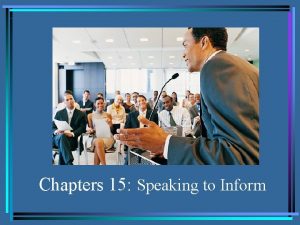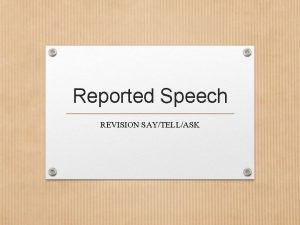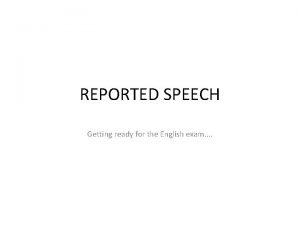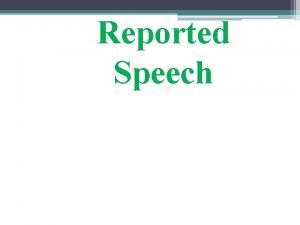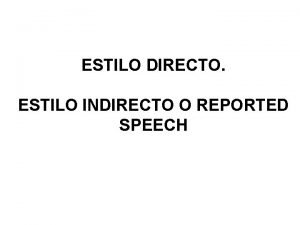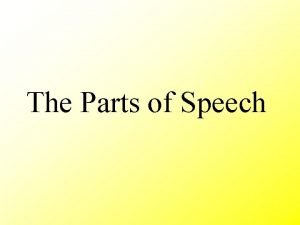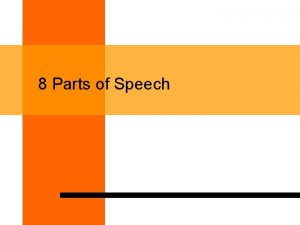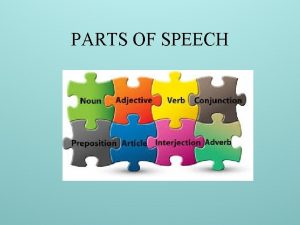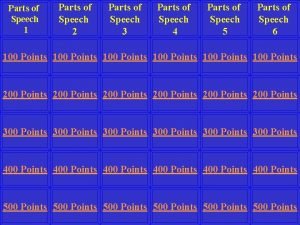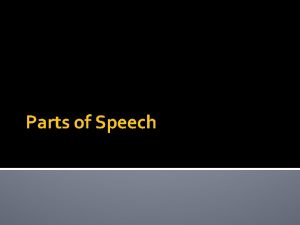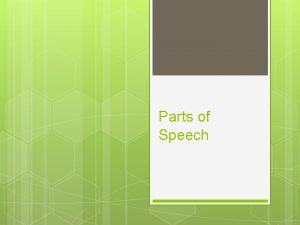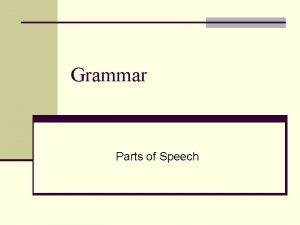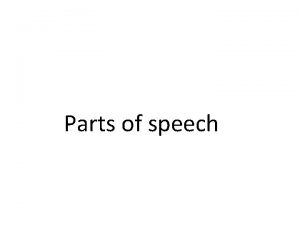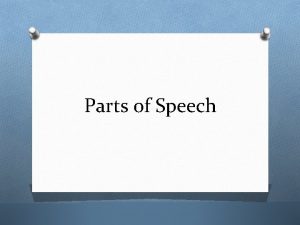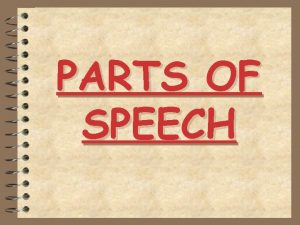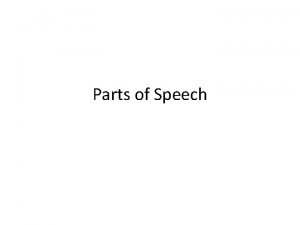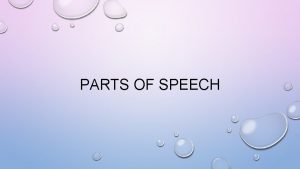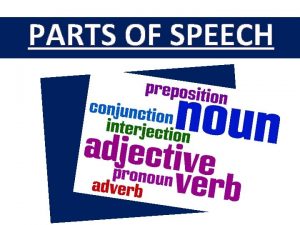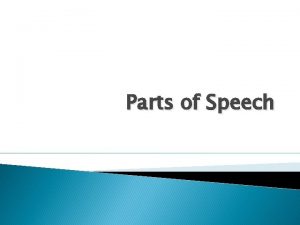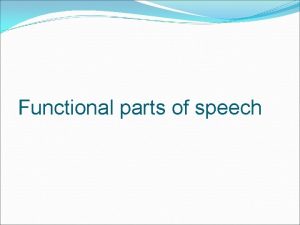Parts of a speech Parts of a speech




















- Slides: 20

Parts of a speech

Parts of a speech • Introduction • Body • Conclusion • Transitions

Body of speech • Utilize strategic organization • Develop main points • Main points should be created specifically and thoughtfully • 3 -5 main points, 3 will be sufficient for speeches in this class

Organization of main points • Chronological Order- main points follow time pattern • Topical Order- main points are divided into logical subtopics • Problem-Solution Order- main point one focuses on problem, main point two presents solution

Less common organization • Spatial Order-main points follow a directional pattern • ex: explaining the structure of a hurricane • Causal Order- main points show a cause/effect relationship

tips for preparing Main points • Keep main points separate • Use same pattern of wording for main points • Karate improves; Karate increases; Karate teaches • Keep amount of time balanced based on topic and complexity

Introduction • Greeting • Attention Getter (interest catcher, hook) • Credibility statement • Preview statement

Greeting • Introduce yourself • Say hello, hi, welcome, something • Tell the audience your name

Attention getter • Gets audience’s attention • Needs to be relevant to topic • Quote • Statistic • Story • Question • Startling statement

credibility • Explains to audience why you know what you’re talking about • Use easy to understand language

Previewing • Statement that tells the audience what main points will be discussed • Considerations/Types of Previewing • Exactly what your main points are • Tell audience what you will talk about--reveal more later • Can give specialized information

Introduction tips • Keep intro brief • Consider introduction needs in research • Be creative • Worry about exact wording/order after completing body • Work out introduction in detail • Start after audience is quiet and focused

Conclusion • Lets audience know you are ending the speech • Reinforce audience’s understanding of, or commitment to, the central idea

Signal the end of the speech • Language • “In conclusion, My purpose has been, Let me end by saying” • Delivery • Crescendo ending- build speech up to powerful point • Dissolve ending- creates emotional appeal by fading step by step to dramatic final statement

Reinforce the Central idea • Summarize your speech • End with a quote • Make a dramatic statement • Refer to the introduction

Tips for the Conclusion • Consider concluding materials while researching • Conclude with bang, not a whisper • Keep it powerful, but brief • Don’t leave it to chance--practice and write it out

Connectives • Word or phrase connecting ideas of speech and relationship between them • Transitions • Internal Previews • Internal Summaries • Signposts

Transition • Word or phrase that indicates when a speaker finished one thought and moves to another • “Now that we have. . . ” • “I have spoken so far. . . ” • “Keeping these points in mind. . . ”

Internal Previews & Summaries • Internal Preview • Statement within the speech that let’s audience know what speaker will discuss next • Internal Summary • Statement within the speech that summarizes previous points

Signposts • Brief statement that indicates where a speaker is in the speech or that focuses attention on key ideas • “The first cause” • “The second cause” • “The final cause”
 Reported speech preposition
Reported speech preposition Pure speech
Pure speech A speech to the young
A speech to the young Quoted speech vs reported speech
Quoted speech vs reported speech Informative speech vs persuasive speech
Informative speech vs persuasive speech Past simple reported speech
Past simple reported speech He said to me please lend me your pen
He said to me please lend me your pen Reported speech examples with answers
Reported speech examples with answers We indirect speech
We indirect speech Speech to the young speech to the progress-toward theme
Speech to the young speech to the progress-toward theme Example of indirect speech act
Example of indirect speech act Reported speech present simple
Reported speech present simple Reported speech form
Reported speech form Direct and reported speech
Direct and reported speech Informative vs persuasive
Informative vs persuasive Before en reported speech
Before en reported speech Direct speech into reported speech
Direct speech into reported speech Exercise 2
Exercise 2 Tom said 'i want to visit my friends this weekend.'
Tom said 'i want to visit my friends this weekend.' Reported speech and quoted speech
Reported speech and quoted speech Estilo indirecto spanish exercises
Estilo indirecto spanish exercises
